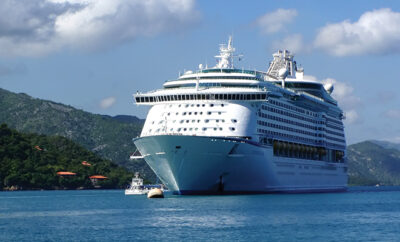
Archipelago of the Azores
Are the short gray days and cold temperatures bringing you down or aggravating your seasonal affective depression? Consider an excursion to the verdant, fascinating Portuguese archipelago of the Azores.
A group of nine volcanic islands extending 370 miles and located about a thousand miles west aof Lisbon, Portugal, the Azores were discovered and colonized by the Portuguese in the mid-15th century. Over the following two centuries, emigrants from Scotland, Germany, Flanders, Africa, France and Spain settled in the archipelago, contributing to today’s rich mixture of cuisine, dialect, culture and traditions.
Climate
The subtropical climate beckons travelers year-round, with average temperatures between 59 and 77 degrees. The summer months are the hottest, with record highs around 83 degrees, but there has never been a frost, snowfall or freeze recorded at sea level on any of the islands. On cooler days, the geothermal pools in Furnas Valley, known for their skin-nourishing natural benefits, are an attraction for locals and visitors alike.
Accommodations
The largest of the islands and economic capital of the Azores, São Miguel, also known as Isla Verde, is replete with luxury hotels and spas. Casa Hintze Ribeiro, a boutique gem whose public spaces and guest rooms combine functionality and style created by internationally awarded interior designer Nini Andrade Silva, is located in the heart of Ponte Delgado and is a marvelous base to explore the island’s natural wonders.
The art deco Terra Nostra Garden Hotel in the Vale of Furnas, adjacent to the 200-year-old Terra Nostra Botanical Garden, boasts a restaurant that serves up traditional dishes of cozido das Furnas stew, slow cooked underground by volcanic steam. Guests have free access to the garden, an ecological wonderland with its geothermal lake, pool and hidden mystical grottos.
All islands have a wide variety of accommodations. An adventurous visitor can rent a beach cottage, apartment, or one of many charming farmhouses or manor houses known as quintas.
Nature Lover’s Paradise
Sustainable tourism is truly embodied in this archipelago. UNESCO designated the islands of Graciosa, Flores and Corvo as biospheres, and the islands also contain 13 Ramsar wetland sites and over 30 Blue Flag beaches.
Pico Island, a World Heritage site, contains evidence of viticulture going back 500 years, with long, linear walls running inland from and parallel to the rocky coastline around its northern and western edges. These stone walls form thousands of contiguous, rectangular plots built to protect crops from wind and salt spray. Vines are still planted within these small plots, called currais, and the island’s thriving small-batch viticulture is made sustainable by the UNESCO designation.
To Azoreans, the landscape and environment are treasures; 95 percent of the islands are protected areas and marine reserves. In 2014, QualityCoast, a program of Europe’s Coastal & Marine Union, gave the Azores its highest accolade for sustainable coastal communities, the Platinum Award.
Adventure Sports Playground
Each island has a distinct personality. On Pico, you can summit a 7,700-foot peak, the highest in Portugal, and swim in Varadouro, a seaside town on Faial island’s western coast famous for its black basalt tidal pools that are mostly accessible by ladder.
On Terceira, adventure junkies can rock climb, zip line, kayak and go coastering with experienced guides. With the volcanic topography and forested mountains, some hiking trails can be accessed only on foot. On São Miguel, Rocha de Relva is a remote hiking spot that traverses private farms and vineyards; its path hugs the side of a cliff as it goes down to the sea. On this trail, donkeys are used to haul goods up and down the slopes. And don’t forget exploring the calderas and 14 volcanoes; most are dormant, but a submarine eruption at Capelinhos in 1957 created a new island that soon merged with the western peninsula.
The subtropical climate, Gulf Stream and rich natural resources merge to create a paradise for divers. On São Miguel, commercial dive groups are held to a maximum of five divers and are often guided by biologists. First-time divers can find equipment, teachers and tours. On a good day, visibility can be up to 200 feet!
Getting There
The Azores’ own airline, SATA International, now offers limited direct flights from Boston, Massachusetts, and Oakland, California, to Ponta Delgada Airport on São Miguel, the main airport for international arrivals. During the summer, limited direct flights go into Lajes Field Airport on Terceira Island from Oakland International Airport. If you’re already in Europe, it’s a short hop to Ponta Delgada.
Since the Azores is part of Portugal, travelers must adhere to its entry and exit requirements. You must have a U.S. passport that will be valid for at least three months beyond your stay, but you don’t need a visa to travel to Portugal for up to 90 days.
Accessible, affordable, kaleidoscopically beautiful, the Azores should be on every traveler’s bucket list. ■
Sources: azores.com, bensaude.pt, travelandleisure.com, furnasboutiquehotel.com, qualitycoast.info, traveltips.usa.com, volcanodiscovery.com and wikipedia.org.







